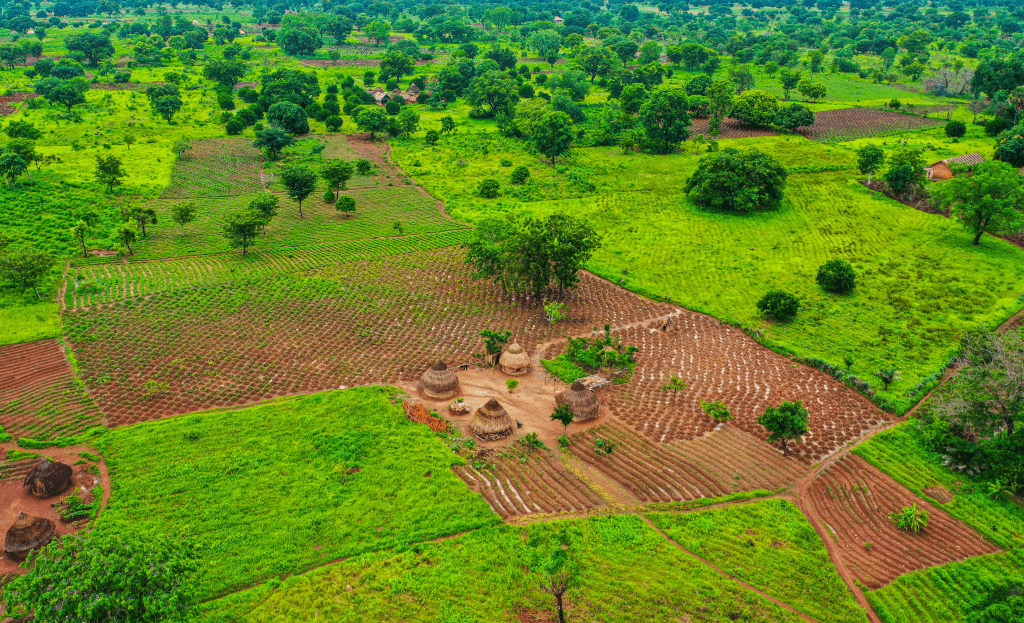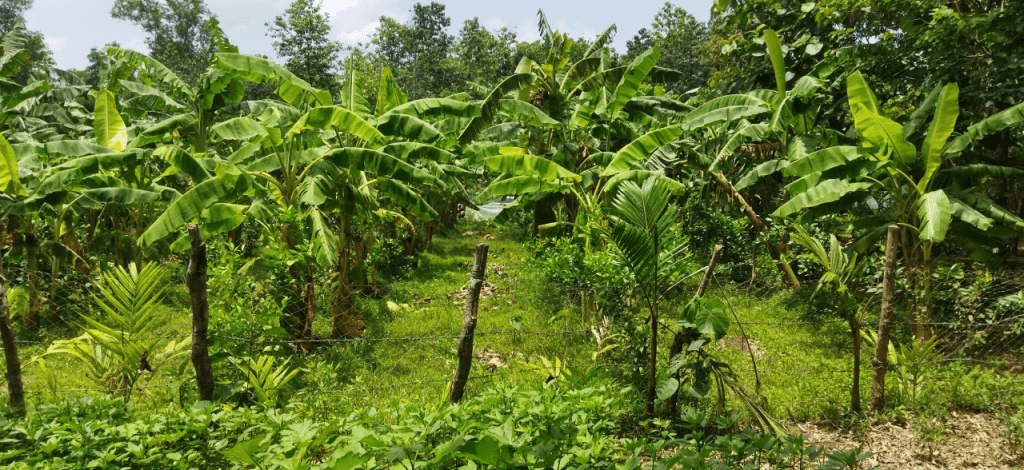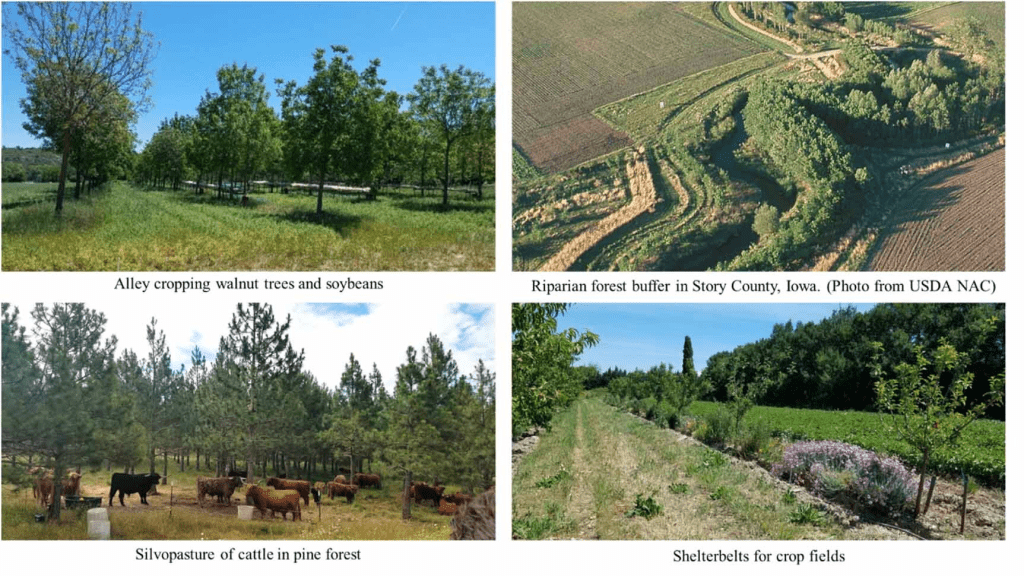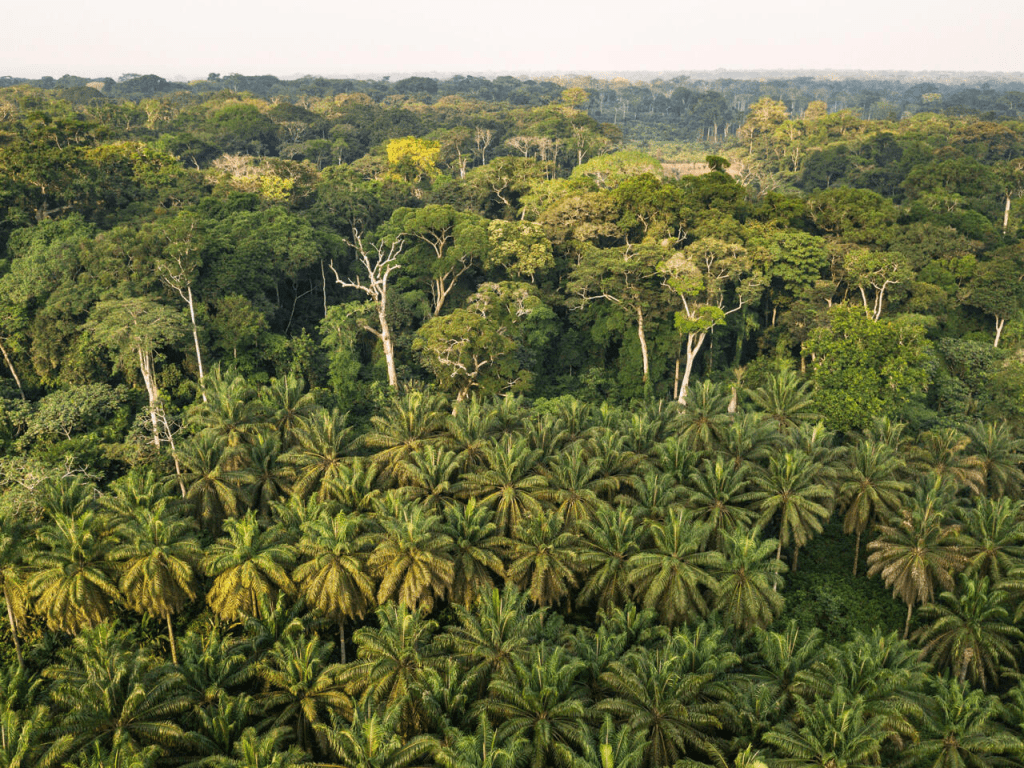
Table of Contents
- Introduction
- Understanding Agroforestry
- The State of Agroforestry in Nigeria
- Environmental Benefits of Agroforestry
- Economic Benefits of Agroforestry
- Social and Community Benefits of Agroforestry
- Challenges and Barriers to Agroforestry Adoption in Nigeria
- Strategies to Promote Agroforestry in Nigeria
- Farmer Education and Training
- Conclusion
- References
Introduction
Nigeria’s agricultural sector is vital to the nation’s economy, providing employment for over 70% of the population and ensuring food security for millions. However, the expansion of agricultural land has led to extensive deforestation, soil degradation, and loss of biodiversity. These challenges threaten the long-term sustainability of agricultural production and the environment.

One promising solution to address these concerns is agroforestry – a system that integrates trees and shrubs with crops and livestock. Agroforestry is not just a farming practice; it is a sustainable land-use approach that improves environmental health while enhancing farmers’ incomes. This approach has the potential to mitigate climate change, restore degraded landscapes, and offer economic benefits to smallholder farmers in Nigeria.
This blog provides a comprehensive exploration of agroforestry in Nigeria, detailing its environmental, economic, and social advantages. We also examine the current state of agroforestry practices, the barriers to adoption, and potential strategies to promote agroforestry across the country.
Understanding Agroforestry
Definition and Concepts
Agroforestry is defined as the deliberate integration of trees and shrubs with agricultural crops and livestock on the same piece of land. This approach creates multifunctional landscapes that provide food, fuel, fodder, and other ecosystem services. The World Agroforestry Centre (ICRAF) defines agroforestry as a dynamic, ecologically based system that diversifies and sustains agricultural production to improve social, economic, and environmental conditions.
Agroforestry differs from traditional agriculture by emphasizing the synergy between trees and agricultural crops or livestock. Trees in agroforestry systems serve multiple functions: providing shade, preventing soil erosion, fixing nitrogen, and offering additional income through timber, fruits, and medicinal products. This practice is especially beneficial in regions like Nigeria where environmental degradation poses a significant threat to agricultural productivity.

Agroforestry is recognized globally for its ability to provide both productive and protective benefits. It is a nature-based solution to many agricultural challenges and aligns with the Sustainable Development Goals (SDGs), particularly those related to climate action, zero hunger, and life on land.
Types of Agroforestry Systems
Agroforestry encompasses a wide range of systems that integrate trees with agricultural production. These systems can be adapted to diverse ecological and socio-economic conditions. The main types of agroforestry systems include:
Agrosilvicultural Systems: These systems combine agricultural crops and trees. Examples include:
Alley Cropping: Cultivating crops between rows of trees or shrubs, which provide shade and organic matter.
Home Gardens: Small-scale farms combining fruit trees, vegetables, and medicinal plants around homesteads.
Silvopastoral Systems: These systems integrate livestock grazing with trees. Examples include:
Fodder Banks: Planting trees and shrubs that provide livestock feed.
Shade Pastures: Grazing livestock under the canopy of scattered trees to protect animals from heat stress.
Agrosilvopastoral Systems: These systems integrate crops, livestock, and trees on the same land.
Examples include:
Integrated Crop-Livestock Systems: Combining annual crops with tree-based fodder and livestock.
Parkland Systems: Scattered trees on cropland, a common practice in northern Nigeria.
Improved Fallows: This system involves planting fast-growing, nitrogen-fixing trees during fallow periods to restore soil fertility. Examples include using species like Gliricidia sepium or Leucaena leucocephala to improve degraded soils.
Each of these systems offers unique benefits, allowing farmers to choose approaches that best suit their local conditions and economic needs.
The State of Agroforestry in Nigeria
Agroforestry practices in Nigeria are deeply rooted in traditional farming methods. For centuries, Nigerian farmers have used indigenous systems like compound farms and parklands to integrate trees with agricultural production. In the savannah regions, for instance, scattered trees such as Vitellaria paradoxa (shea butter tree) and Parkia biglobosa (African locust bean) are commonly found in cultivated fields.
Despite its historical roots, the modern adoption of agroforestry in Nigeria remains limited. This is partly due to insufficient awareness, lack of policy support, and the perception that trees compete with crops for resources. However, various government and non-governmental organizations are making efforts to promote agroforestry as a sustainable land-use strategy.

Key regions where agroforestry is practiced include:
Northern Nigeria: Focused on combating desertification through windbreaks and shelterbelts.
Southwestern Nigeria: Emphasizing cocoa-based agroforestry systems, where cocoa is grown under the shade of fruit and timber trees.
Middle Belt: Promoting the integration of crops and livestock with tree planting to restore degraded lands.
Several national initiatives and international collaborations aim to scale up agroforestry in Nigeria. For instance, the Great Green Wall Project targets desertification in northern Nigeria by planting trees along the Sahel belt. Additionally, research institutions like the Forestry Research Institute of Nigeria (FRIN) and the International Institute of Tropical Agriculture (IITA) are supporting agroforestry through research, extension services, and farmer training.
The future of agroforestry in Nigeria is promising, but its widespread adoption requires addressing policy gaps, improving land tenure security, and enhancing farmers’ technical capacity. By investing in agroforestry, Nigeria can achieve a balance between agricultural productivity and environmental conservation.
Environmental Benefits of Agroforestry
Agroforestry plays a crucial role in improving environmental sustainability. By integrating trees and shrubs with agricultural production, it helps restore degraded lands, combat climate change, and promote ecological balance. In Nigeria, where agricultural expansion often leads to deforestation and environmental degradation, agroforestry offers practical solutions to restore ecosystems while maintaining food production.
a) Soil Conservation and Fertility
One of the primary environmental benefits of agroforestry is its contribution to soil conservation and fertility. In many parts of Nigeria, soil erosion caused by deforestation and unsustainable farming practices has led to declining agricultural productivity. Agroforestry systems mitigate this by:
- Erosion Control: Tree roots anchor the soil, reducing surface runoff and preventing soil loss during heavy rains. For example, windbreaks and shelterbelts in northern Nigeria protect fragile soils from wind erosion.
- Nutrient Cycling: Trees in agroforestry systems recycle nutrients by drawing them from deeper soil layers and returning them to the topsoil through leaf litter decomposition. Nitrogen-fixing species like Gliricidia sepium and Leucaena leucocephala improve soil fertility by naturally enriching the soil with nitrogen.
- Microclimate Regulation: Tree canopies reduce direct sun exposure, minimizing soil moisture loss and improving soil structure. This is especially important in semi-arid regions like northern Nigeria, where drought conditions are prevalent.

b) Climate Change Mitigation
Agroforestry is recognized as a cost-effective strategy for mitigating the effects of climate change through carbon sequestration and reducing greenhouse gas emissions. In Nigeria, where agriculture is both a contributor to and victim of climate change, agroforestry offers a dual solution by:
- Carbon Sequestration: Trees absorb and store carbon dioxide (CO₂) from the atmosphere. Agroforestry systems in Nigeria, particularly parkland and silvopastoral systems, help offset carbon emissions from traditional agricultural practices.
- Reducing Deforestation: Integrating trees with farming reduces the need to clear new land for agriculture, conserving forests and biodiversity. Agroforestry practices like cocoa-based systems in southwestern Nigeria demonstrate how combining tree crops with food production reduces forest encroachment.
- Climate Adaptation: Agroforestry systems enhance resilience against extreme weather events by offering shade, conserving water, and improving ecosystem stability. For smallholder farmers in Nigeria, these systems act as buffers against droughts and erratic rainfall.
c) Biodiversity Preservation
Agroforestry provides a habitat for various plant and animal species, fostering biodiversity conservation even in cultivated areas. In Nigeria, where agricultural expansion threatens wildlife habitats, agroforestry helps sustain ecosystems by:
- Habitat Creation: Agroforestry landscapes offer shelter and food for birds, insects, and other wildlife. For example, bees and other pollinators thrive in agroforestry systems, improving crop yields through enhanced pollination services.
- Preserving Indigenous Species: Traditional agroforestry systems often maintain native tree species, which preserve genetic diversity. Parkland systems in northern Nigeria typically include indigenous trees like Vitellaria paradoxa (shea butter tree) and Parkia biglobosa (African locust bean).
- Ecosystem Restoration: Agroforestry restores degraded lands by reintroducing native vegetation, improving soil structure, and rebalancing natural processes. Projects like the Great Green Wall initiative in northern Nigeria use agroforestry to combat desertification.
Economic Benefits of Agroforestry
Agroforestry significantly improves the economic well-being of farmers by providing multiple revenue streams, reducing production costs, and increasing farm resilience against market shocks. In Nigeria, where smallholder farmers form the backbone of agricultural production, the economic benefits of agroforestry are transformative.
a) Increased Farm Income
Agroforestry diversifies farmers’ income by enabling the production of various outputs beyond staple crops. This additional income can be derived from:
- Timber and Non-Timber Products: Farmers can harvest and sell timber, fruits, nuts, fuelwood, and medicinal plants. For instance, cocoa-based agroforestry systems in southwestern Nigeria provide both food and high-value cash crops.
- Value-Added Processing: Agroforestry products can be processed into higher-value commodities. For example, Vitellaria paradoxa yields shea butter, a lucrative export product that provides rural women with income.
- Year-Round Income: Agroforestry systems offer seasonal diversification, ensuring a continuous flow of revenue. Trees like cashew and mango produce fruits during off-season periods for staple crops.
b) Diversification of Livelihoods
By combining forestry with farming, agroforestry reduces farmers’ vulnerability to crop failures and price fluctuations. This livelihood diversification provides economic security through:
- Multiple Income Streams: Farmers can earn from crops, livestock, and tree products, reducing reliance on a single source of income. This model is especially important for rural communities facing market volatility.
- Employment Generation: Agroforestry creates jobs throughout the value chain—from planting and harvesting to processing and marketing. This enhances rural employment opportunities and reduces migration to urban areas.
- Ecotourism Potential: Agroforestry landscapes with native biodiversity can attract ecotourism, providing additional community revenue. In regions with unique flora and fauna, this presents an untapped economic opportunity.

c) Reduced Input Costs
Agroforestry minimizes the need for external inputs by harnessing natural ecological processes. This leads to cost savings in several ways:
- Natural Fertilization: Nitrogen-fixing trees reduce the need for synthetic fertilizers, lowering input expenses. This is particularly beneficial in low-resource environments where chemical fertilizers are costly.
- Pest Control: Agroforestry systems encourage natural predators and beneficial insects, reducing the reliance on chemical pesticides.
- Water Conservation: Trees reduce water evaporation and improve water retention, decreasing the need for irrigation in semi-arid regions.
Social and Community Benefits of Agroforestry
Beyond its economic and environmental impacts, agroforestry enhances community resilience, social cohesion, and food security. In Nigeria, where rural communities rely heavily on agriculture for sustenance, agroforestry provides critical social benefits.
a) Improved Food Security
Agroforestry systems provide a diversified food base, improving household nutrition and resilience against food shortages:
- Diverse Food Sources: Trees provide fruits, nuts, and edible leaves, supplementing staple crops. This enhances diet diversity and reduces malnutrition risks.
- Resilience to Shocks: Agroforestry reduces the impact of climate-induced crop failures by offering alternative food sources throughout the year.
b) Community Development
Agroforestry promotes collective action and knowledge-sharing, strengthening rural communities:
- Collaborative Practices: Agroforestry initiatives often involve group cooperation, fostering community bonds and resource-sharing.
- Youth Empowerment: Agroforestry offers training and employment opportunities for young people, reducing rural-urban migration.

c) Cultural Preservation
Traditional agroforestry systems play a key role in preserving cultural practices and indigenous knowledge:
- Indigenous Practices: Many Nigerian communities practice agroforestry as part of their cultural heritage, integrating spiritual beliefs with land management.
- Knowledge Transfer: Agroforestry supports the intergenerational transfer of farming wisdom, preserving cultural identities.
Challenges and Barriers to Agroforestry Adoption in Nigeria
Despite its numerous benefits, the adoption of agroforestry in Nigeria faces several challenges. These barriers are rooted in socio-economic, institutional, and technical factors that limit widespread implementation. Addressing these challenges requires a multi-faceted approach involving policy support, farmer education, and infrastructure development.
- Limited Awareness and Knowledge
Many Nigerian farmers are unaware of the long-term benefits of agroforestry or lack the technical expertise to implement these systems effectively. This knowledge gap is largely due to:
Inadequate Extension Services: Agricultural extension programs primarily focus on conventional farming, with limited emphasis on agroforestry techniques. This leaves many farmers without the technical guidance needed to adopt and sustain agroforestry practices.
Lack of Demonstration Farms: Without practical examples to observe and learn from, farmers are hesitant to adopt unfamiliar systems. Demonstration farms are crucial for showing the tangible benefits of integrating trees with crops and livestock.
- Land Tenure Insecurity
Unclear land ownership and insecure land-use rights pose significant obstacles to agroforestry adoption. Farmers are often reluctant to invest in long-term agroforestry practices if their land tenure is uncertain. The main issues include:
Fear of Land Loss: Trees are seen as permanent structures that can complicate land claims or lead to disputes. As a result, farmers hesitate to plant trees on land where ownership is not legally guaranteed.
Short-Term Leasing: Many farmers operate on rented or communal land with short-term leases. This discourages long-term investments like tree planting because the benefits of agroforestry are realized over several years.

- Financial Constraints
Establishing agroforestry systems often requires significant upfront investment and involves long payback periods. Many smallholder farmers, who form the backbone of Nigeria’s agricultural sector, face financial limitations due to:
High Initial Costs: The cost of tree seedlings, labor, and maintenance is a major barrier. Agroforestry requires more investment than conventional cropping, especially during the early establishment phase when returns are minimal.
Limited Access to Credit: Smallholder farmers often lack access to credit facilities tailored to agroforestry projects. Existing agricultural financing models favor short-term, seasonal crops rather than long-term systems like agroforestry.
- Policy and Institutional Gaps
The absence of a clear national policy on agroforestry and weak institutional support hinders large-scale adoption. Agroforestry falls between agricultural and forestry sectors, leading to fragmented governance and limited progress. Key policy-related challenges include:
Weak Coordination: Poor collaboration between government agencies responsible for agriculture and forestry results in disjointed efforts. This reduces the effectiveness of initiatives intended to promote agroforestry.
Lack of Incentives: There are few policy-driven incentives to encourage agroforestry adoption. Without targeted policies like tax breaks, subsidies, or payment for ecosystem services, farmers have little motivation to shift toward agroforestry systems.

- Socio-Cultural Resistance
Traditional farming practices are deeply embedded in rural Nigerian communities, and introducing new methods like agroforestry often meets cultural and social resistance. Key socio-cultural challenges include:
Perceived Risk: Farmers fear that transitioning to agroforestry may reduce short-term yields, making them reluctant to adopt new systems despite the long-term benefits.
Cultural Preferences: In some regions, tree planting carries cultural meanings, such as signifying permanent land ownership or spiritual beliefs. These perceptions can create resistance to agroforestry, especially in areas where communal land-use traditions are strong.
Overcoming these challenges requires a comprehensive approach that addresses both systemic and local-level barriers, ensuring that agroforestry becomes a viable and attractive option for Nigerian farmers.
Strategies to Promote Agroforestry in Nigeria
Promoting agroforestry in Nigeria requires a coordinated effort across policy, education, financing, and community engagement. Strengthening the policy framework is crucial to integrating agroforestry into Nigeria’s agricultural and environmental systems. Developing a national agroforestry policy can provide a clear direction for implementation, while financial incentives such as grants, tax relief, and subsidies can encourage farmers to adopt agroforestry practices. Addressing land tenure through legal reforms is also essential ensuring secure land ownership allows farmers to invest confidently in long-term agroforestry systems.
Farmer education and training play a critical role in scaling agroforestry adoption. Establishing community-based training programs like farmer field schools and demonstration plots can offer practical knowledge on agroforestry techniques. Expanding agricultural extension services to include agroforestry specialists can provide farmers with ongoing technical support. Additionally, fostering knowledge sharing through farmer cooperatives and local networks helps spread best practices and strengthens community learning.
Access to finance remains a significant barrier for many farmers, particularly given the long gestation periods required for agroforestry systems to mature. Designing credit facilities tailored to agroforestry can ease this burden. Public-private partnerships can also mobilize resources, combining governmental policy support with the technical and financial resources of NGOs and private institutions. Microfinance initiatives, specifically designed for smallholder farmers, can provide essential capital for agroforestry investments.
Leveraging technology and innovation can further accelerate the adoption of agroforestry. Digital platforms, including mobile applications and USSD codes, can disseminate information on best practices and connect farmers to markets. Remote sensing technology offers a valuable tool for monitoring agroforestry adoption and assessing its environmental impact, facilitating evidence-based policy decisions and tracking progress.

Community engagement and awareness efforts are fundamental in promoting agroforestry. Public campaigns can highlight the environmental, economic, and social benefits of combining trees with crops and livestock. Special focus should be given to encouraging the participation of women and young people through targeted training and support programs, fostering inclusive growth in agroforestry adoption.
Farmer education efforts should be tailored to local contexts, considering regional climates, cultural practices, and available resources. Participatory approaches that involve farmers in decision-making processes can increase their sense of ownership and commitment to agroforestry practices. Demonstration farms offer a powerful tool for hands-on learning, while continuous support from extension agents can ensure sustained adoption and adaptation to emerging challenges.
By combining these strategies, policy reform, education, financing, technology, and community engagement Nigeria can unlock the full potential of agroforestry, promoting sustainable agriculture while addressing critical environmental challenges.
Conclusion
Agroforestry holds immense potential to address Nigeria’s environmental, economic, and social challenges. By integrating trees with crops and livestock, this approach promotes soil conservation, enhances climate resilience, increases farmer incomes, and strengthens rural communities. However, scaling agroforestry adoption requires addressing land tenure issues, improving financial access, and providing targeted education.

A comprehensive strategy that includes policy reform, community engagement, and technical innovation can drive agroforestry adoption, ensuring a sustainable future for Nigerian agriculture. With coordinated efforts from the government, private sector, and civil society, agroforestry can become a transformative solution for sustainable land use and rural development in Nigeria.
References
- Ajayi, O.C., et al. (2011). “Agroforestry in sub-Saharan Africa: Challenges and Opportunities.” World Agroforestry Centre (ICRAF).
- Food and Agriculture Organization (FAO). (2020). “The State of the World’s Forests.”
- Nair, P.K.R. (2012). “Agroforestry Systems and Practices.” Springer.
- Federal Ministry of Environment, Nigeria. (2021). “National Strategy for Agroforestry Development.”
- International Institute of Tropical Agriculture (IITA). (2023). “Agroforestry and Sustainable Agriculture in Nigeria.”
